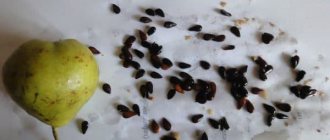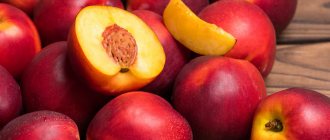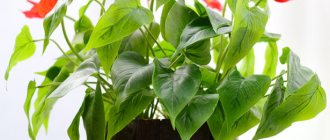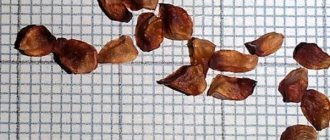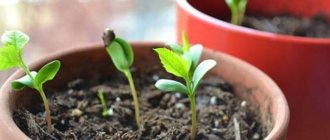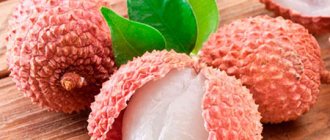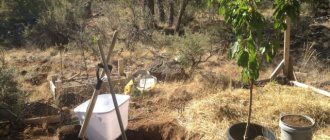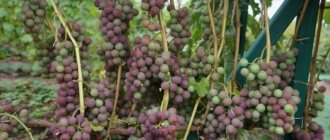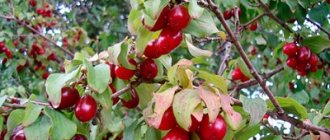Apricot is a southern, heat-loving, high-yielding crop with attractive-looking, tasty, healthy and aromatic fruits, which are consumed fresh, processed and canned. To grow it, certain simple conditions are required, under which everyone can get their own apricot tree with minimal care and within five to six years after planting they will enjoy a natural vitamin product. To do this, you don’t even need to purchase expensive seedlings, just buy ripe and sweet apricots of good quality, eat them with pleasure, and grow trees from the seeds.
This article will help everyone understand which seeds can become high-quality planting material, how to properly prepare them for planting and plant them, as well as how to care for young plants.
Growing apricots from pits - pros and cons
Before starting the process of growing apricots from stones, it is important to understand why many gardeners, instead of buying strong and strong seedlings (of almost any variety), choose such a long and labor-intensive procedure. It turns out that there are many positive arguments for this, all of them in favor of a small apricot kernel.
- Experienced gardeners advise planting several trees in the garden at once for good pollination and a bountiful harvest. If you purchase high-quality varietal seedlings, it will be very expensive. But we get the bones almost free of charge - and this is only one of its significant advantages.
- When planting a large number of seeds in the future, you can make a careful selection and leave only the highest quality and strongest seedlings.
- Trees made from stones have stronger immunity. They can adapt to unexpected vagaries of weather, to different climatic conditions and soil characteristics on the site. Seedlings obtained in this way tolerate high and low air temperatures from 30 degrees below zero to 40 degrees above zero.
- The stone fruit tree produces a consistent and bountiful harvest every year. Its fruits are more tasty and of higher quality in all respects.
- The seed tree is highly resistant to disease and is very rarely affected by pests. This apricot lives much longer, it is unpretentious in care, hardy and hardened.
There are also disadvantages to such cultivation. It is quite possible that an ordinary “wild” tree can grow from a seed; in the future, the tree will need grafting, and the gardener will have to spend a lot of time near the plants, be patient and use his time and energy.
About the planting scheme
It is better to plant apricot seeds in long furrows. The distance between the rows is at least half a meter; this will allow watering, loosening the soil, and fertilizing without the risk of damaging delicate trees. Planting depth - up to 7 cm.
Leave a small distance between the seeds - 20-30 cm, which is recommended to be shortened if there are doubts about the quality of the planting material. It is better to germinate the seeds first, then thin out.
See also
How can you propagate apricot with green cuttings at home, planting methodsRead
Recommended soil composition
The success of growing an apricot tree largely depends on the correct soil. The soil should be light and provide access to oxygen. If the soil on the site is heavy, it is better to purchase a ready-made substrate for seedlings or mix a special composition:
- 3 parts garden soil;
- part of coarse sand;
- 2 parts of turf;
- some wood ash;
- 2 parts peat;
- part of the clay.
It is recommended to add a little saltpeter (no more than a handful per 10 liters of soil mixture). Mix thoroughly - the components should be distributed evenly. The same soil composition is recommended to be used when transplanting seedlings.
Be sure to put a layer of drainage - small crushed stone, pebbles, crushed brick. Place the prepared soil mixture into the furrow, carefully place the seeds, and cover with a layer of soil. It is recommended to use mulch (peat, compost), which will allow you not to worry about the soil drying out.
Optimal place for planting
To plant young plants in the country, it is recommended to choose a cozy corner without drafts. Make sure that gusts of wind do not harm the trees - install a fence or choose a site near outbuildings. Apricots are a heat-loving crop, so it is recommended to choose a sunny place for planting them. Light partial shade is also allowed, but there remains a risk that the trees will become too elongated.
Undesirable neighborhood
Compatibility with other fruit trees also plays an important role. It is not recommended to plant apricots near large crops - apple trees, pears, nuts. Wide crowns of neighboring plants prevent access to sunlight and fresh air, which causes diseases and poor fruiting.
On the site, the most recommended neighbors for apricots are cherries and plums. The crop does well near bushes - currants, raspberries.
Seedling planting depth
It is better to prepare the planting hole for apricots in advance. The recommended diameter is at least 70 cm. Depth is up to half a meter. Be sure to put a drainage layer.
Basic rules for planting plants:
- Place prepared nutrient soil (10 cm) on the drainage layer;
- pour a low mound on which to place the root shoots;
- sprinkle with soil, compact easily;
- put a mulch layer;
- water abundantly.
Be sure to immediately tie the seedling to a support, which will allow you not to worry about gusts of wind.
At what distance to plant
When calculating the distance between seedlings, it is recommended to take into account the apricot variety. Some representatives of this crop grow up to 15 m with a crown radius of more than 4 m. Plants should not be planted too close to each other or other fruit trees - subsequently, such negligence in the rules of agricultural technology threatens poor fruiting.
The recommended distance between apricots is at least 5 m. You can use staggered planting - also leave 5 m between the rows.
Which apricot kernels are suitable for planting?
When choosing planting material, you need to consider some nuances:
- imported fruits grown in the southern regions cannot be taken for planting and cultivation in the northern regions, such plants will not survive the harsh local climate;
- You can use only the seeds of local varieties, and in the northern regions - special winter-hardy varieties or apricot seeds from Siberia and the Far East;
- It is necessary to select only seeds from ripe and overripe, the juiciest and sweetest fruits, large in size, with a soft interior, without damage, rot or mold.
For central Russia and the Far East, you can take varieties such as “Akademik”, “Sibirsky”, “Levko”, “Petr Komarov”, “Khabarovsky”.
For the Urals - “Snezhinsky”, “Golden Nectar”, “Chelyabinsky Early”, “Seraphim”, “Pikantny”, “Uralets”.
For the Moscow region - “Alyosha”, “Triumph Northern”, “Lel”, “Zeus”.
We create optimal conditions for sprouts
For active growth of sprouts, you need to create favorable conditions. First of all, think about lighting and temperature conditions.
Illumination
Containers with seedlings are placed on sunny windows. But it is advisable that it is not on the south side, where the sun is very hot. It is best to place them on the east or west side. The sprouts should be exposed to sunlight for at least 12 hours. If there is not enough light for apricot seedlings, install additional lamps and turn them on for 3-4 hours in the evening.
Temperature and humidity
The temperature must be maintained at +18-+22 degrees. Sudden changes in temperature are undesirable.
High humidity is not suitable for seedlings; the best option is 60%.
Excessive humidity leads to the fact that seedlings can begin to rot and die.
See also
Description and cultivation of the best varieties of felt cherries, planting and care
Read
Planting process and planting care
Once the soil has been prepared and favorable conditions for growing a tree have been created, you can begin planting the planting material.
Depth and seed placement pattern
Seeds are planted at a distance of 8-10 cm from each other. If you plant seeds close together, they will interfere with each other’s development and will grow weak. It is not necessary to bury the seed too much. It is planted to a depth of 2-3 cm.
Watering and fertilizing
After planting, the seeds are watered generously with water at room temperature. You need to water the soil as it dries out. Apricots do not like waterlogged soil. When sprouts appear, fertilizing is applied to the soil. The seedlings are sprinkled with wood ash and watered. You can also water with potassium humate diluted in water or bird manure.
When to plant apricot kernels: autumn and spring dates
The most favorable time for planting seeds in open ground is mid-October or mid-April. During this period, rodent activity remains at the lowest level, and suitable temperature conditions are formed in the soil for the adaptation of planting material.
Reference! When sowing in spring, the seedlings are less hardened than when sowing in autumn. And summer planting, which is often carried out during the period of fruit ripening, is not recommended at all, since the young tree will not have time to get stronger by winter and will not be able to survive frosts.
Sprouting a seed
The need for preliminary germination of seeds depends on what time of year they are planted.
Do I need to germinate before planting?
If planting seeds is carried out in the fall, it is enough to soak them in warm water one day. This will allow you to discard empty seeds. Those seeds from which shoots do not emerge will float above the surface of the water. You can safely throw them away. The remaining seeds can be planted in the ground.
What is stratification and how is it done?
Before planting seeds in the ground in the spring, it is recommended to first stratify them. It will be more difficult for seeds that lie dormant from late summer to spring to germinate. In essence, stratification helps to germinate the seed.
To stratify, the seeds are placed in a box with wet sand at the end of January. The box should have drainage holes so that the water does not stagnate and the seeds do not rot. But the sand must always be wet. It is best to lower the box with planting material into the cellar. If there is no cellar, you can dig a hole in the garden, put a box in it and sprinkle it with snow.
If you plan to plant a seed at home, you can first stratify it by wrapping it in a wet cloth and placing it in a plastic container. You can keep such a seed in the refrigerator on the bottom shelf until planting. The stratification period can last about 3 months.
How to grow an apricot from a seed - step-by-step instructions
Preparing apricot kernels before planting
In order for future seedlings to grow strong and hardy, it is necessary to carefully prepare planting material for planting and select the most resilient specimens from it.
Important! Since the germination rate of seeds is not very high, it is worth preparing a large number of them.
Basic Rules:
- all collected seeds are washed well under running water;
- pour into a deep container and fill with water at a temperature of 18 - 22 degrees Celsius;
- throw away all the seeds that float to the surface, since they are empty inside and are not suitable for sowing;
- the remaining specimens are placed in a pink manganese solution overnight, then washed again and dried on cloth or paper;
- Before autumn sowing, the seeds are kept in washed, damp sand in the basement or in the refrigerator at a temperature of 1 to 5 degrees Celsius.
Reference! When planting in autumn, the seeds undergo a hardening process in the ground throughout the entire autumn-winter period.
- If the seeds will be stored in sand until spring, then before storage they must be kept in cold water for three to five days, being sure to replace the water with fresh water daily.
Choosing a place and soil for planting
The planting location is of great importance for the future development of the plant and its productivity, so it is worth listening to the recommendations of experienced gardeners:
- the site must be chosen open and sunny, but protected from drafts and possible strong winds, partial shade conditions are allowed;
- it is good if the planting site is located on a small hill so that the trees are not in danger of being flooded by melt water and stagnant water after prolonged rainfall;
- Apricots cannot be planted in lowlands;
- You cannot use for planting an area where plums or cherry plums previously grew - the remains of the root part of related plants negatively affect the growth of apricot trees;
- the distance between apricots and other fruit crops in the garden should exceed three to four meters;
- since the strengthened seedlings can be transplanted to another place, any available plot of land is suitable for planting seeds;
- Suitable soil for apricots is loam with low acidity, as well as light fertile soil with humus and coarse river sand.
Landing technology
The soil is first dug up, cleared of plant remains, trenches are prepared and filled with a nutrient mixture of humus, sand, straw and black soil (in equal proportions).
The seeds are laid out at a distance of ten to twelve centimeters from each other to a depth of three to four centimeters (in spring) or five to six centimeters (in autumn), sprinkled with earth and watered.
When planting in autumn, the trenches can be additionally covered with pine needles or sawdust, and in the spring (to protect against birds) another special covering will be required.
How to select and prepare seeds
Seeds should be taken from ripe and sweet fruits without signs of pest and disease damage. The pulp should be free of mold, and the bone itself should not be chipped and separate freely.
The seed for planting is taken from overripe fruits
Then proceed to the preparation procedure:
- The seeds are washed and the low-quality ones that float are immediately discarded. The rest are soaked in a manganese solution for 10–12 hours for disinfection.
- After this, they are immersed in ordinary water for 10 days. During this time, the water is regularly replaced.
- When sowing in spring, the seeds are first dropped into a container with damp sand or moss and placed in a cool place (where the temperature ranges from 0 to 2 °C) for 100 days. This serves as hardening. The seeds are periodically inspected and if moldy deposits are detected, they are treated with hydrogen peroxide.
If you plan to grow apricots at home, the seeds are hardened in a different way. After sowing them, the pots are wrapped in plastic and placed in the refrigerator for 4 days.
Caring for young apricot seedlings
Watering mode
Regular watering is usually carried out once or twice a week (especially in May - June), if the tree trunk circle is not mulched and the days are hot and dry. In moderate weather and the presence of mulch (for example, from peat, leaf humus or sawdust), seedlings can be watered two to three times a month. After the fifteenth - twentieth of July, watering the seedlings is completely stopped so that the wood on the shoots has time to ripen before the arrival of winter cold.
It is important to find a middle ground in the volume of irrigation water, since excess moisture is undesirable for apricots, and too little is dangerous. Favorable time for water procedures is the period from 7 to 10 am or from 19 to 21 pm in the evening.
Attention! On a sunny day from 11.00 to 17.00 it is not recommended to water the plants.
Pest protection
Competent and timely care is the key to a strong and strong plant, and in the future – a guarantee of a generous and high-quality harvest. That is why it is necessary to care for seedlings from the moment they appear on the surface of the soil. Young and tender crops attract the attention of rodents, birds and many other pests. It is worth protecting plants from them using a simple structure made from a plastic bottle with a cut off neck and bottom (made of transparent material). This will allow the seedlings to gain strength and grow in a calm environment.
One of the popular preventative measures against pests and diseases is whitewashing tree trunks using lime mortar. The procedure is carried out in autumn or early spring.
Although apricot seedlings are rarely affected by pests, codling moths, aphids, leaf rollers or caterpillars may occasionally appear. These pests can be controlled in various ways, but when the fruits ripen, using chemicals is dangerous to health. It is better to use proven folk recipes. For example, spray with tobacco infusion with the addition of liquid laundry soap.
At the initial stage of seedling development, aphids can be gotten rid of by ash spraying or treatment with Actellik, and codling moths can be gotten rid of by treating the trunk and branches with a lime solution with copper sulfate. You can destroy caterpillars that lay eggs and eat most of the leaf mass with Chlorophos, but only in the spring or after harvesting.
Fertilizer application
Fertilizers are applied only from the second year of the plant’s life - in spring or summer. Saltpeter, urea, peat, ash, eggshell powder, sawdust and sand in equal parts are used as spring root feeding. The best summer fertilizers are herbal infusions with the addition of rotted manure or bird droppings. The interval between fertilizing is two weeks. You can alternate mineral and organic fertilizers.
Trimming and shaping
The first pruning is carried out in the second year of life in early spring, and then annually at the same time. After winter, plants need to be freed from damaged, dried, weakened, frozen branches - this is the first thing. A formative “haircut” involves removing the top (to create a low-standard form), as well as shortening very long, prominent branches and shoots that thicken the crown.
Features of care
In general, planting and caring for apricot trees is simple, but there are some nuances. Experienced gardeners recommend covering young seedlings with plastic bottles to protect them from birds and pests. During the spring and summer, the trees gain strength, grow stronger and grow, after which, by autumn, they can be transplanted to a permanent place. The best place for the tree will be a sunny place in the garden. Here the tree will produce a good harvest. But shaded areas of the garden are also suitable for apricot.
Watering
Plants need to be watered approximately 2 times a month. The gardener needs to focus on the prevailing weather and soil conditions.
Protection from diseases and pests
Before you grow an apricot from a seed in the country, it’s worth finding out what obstacles may arise during this process. Like other fruit trees, apricots are susceptible to attacks from pests and diseases. They can reduce the yield of a plant or even destroy it. Most often, apricots are infected by:
- ring pox: the leaves are modified, the shoots become twisted, the branches die, brown spots appear on the fruits, the disease can lead to the death of the tree;
- plum pox: brown lesions appear on the leaves and fruits in the form of spots or stripes, often this disease spreads to the apricot tree from the plum tree and vice versa;
- moniliosis: this disease often develops in the spring with high air humidity, during the flowering period of trees, it manifests itself as gray rot and burns on the leaves, and greatly reduces yield;
- cytosporosis: the disease manifests itself as small gray tubercles on the bark;
- viral wilt: yellow spots appear on the leaves, they are thickened and curled, the fruits turn brown and become tasteless.
How to insulate young seedlings for the winter
Fragile and delicate seedlings must be protected not only from frost and sunburn, but also from a heavy blanket of snow, which can damage young plants. To do this, it is recommended to use large-volume plastic bottles with the top cut off as a reliable cover.
With the arrival of autumn cold, the trees are treated with a lime solution, sprinkled with dry leaves and wrapped in burlap. In snowy winters, high snowdrifts are piled around the trees, which will “warm” the root system of the plants and protect it from freezing.
Nuances and timing of planting in accordance with climatic conditions
Much in growing apricots depends on climatic conditions. The warmer the region, the higher the opportunity to get full-fledged plants from seeds, achieve a good harvest, and not pay attention to shelters for the winter.
Planting apricots in central Russia
Growing crops in regions with temperate climatic conditions will not be difficult. Plant seedlings in spring (April, May) or mid-autumn (October). Be sure to cover the plants for the winter - use burlap, spruce branches, snow.
Planting apricots in Belarus
The temperate climate of Belarus allows planting seedlings in early spring or mid-autumn. As in regions of Russia that are not characterized by low, severe temperatures, you will have to use a cover for the winter. With the onset of the first warm days, be sure to remove the spruce branches or burlap - melt water can harm the crop.
Apricot planting in the Urals
The harsh conditions of the Urals make it possible to grow good large apricots, but it is recommended to give preference to early varieties. Planting should be done no earlier than May and no later than the end of September. Be sure to put a thick layer of mulch, which will serve as an additional cover before frost. The trunk must also be insulated - severe frosts can damage the delicate bark of young trees.
Planting apricots in Siberia
When planting seedlings in harsh Siberian conditions, it is recommended to monitor weather conditions. Go to the garden after the onset of stable heat - in May and June. It’s also better not to be late with the autumn dates - planting should be done in August and September. A warm cover for the winter is mandatory, and it is recommended to insulate the trunk circle and the main trunk.
If the plant is not too large, wrap even the branches in burlap or film, first collect them in a large bundle and secure with twine. Growing apricot, this wonderful crop, from seeds is an interesting and not too complicated process. The main thing is to adhere to the recommendations and rules of agricultural technology, carefully care for the tree, and avoid making gross mistakes that could be fatal for the plant.
Useful video
How to grow a new tree from an apricot seed - video
Don't be afraid to grow apricots from seeds - video
Apricot trees, grown from seeds over a long and labor-intensive period, are sure to reward hard work and patience and will produce a generous and healthy harvest of sweet, aromatic fruit for many years to come. Plants with an increased degree of unpretentiousness and vitality can grow fully even on infertile soils, in regions with different climates and rapidly changing weather. Subject to all conditions of cultivation and care, and with a great love for gardening and nature, the whole process can become a very interesting and exciting activity, especially for beginners.
Protection from pests and diseases
To avoid the appearance of pests and the development of diseases, do not neglect preventive measures. They are as follows:
- annual whitewashing of trees;
- treating plants with tobacco infusion, a soap solution provides a good result;
- cleaning up fallen leaves, where pests overwinter;
- sealing cracks and wounds in the bark with garden pitch.
All this will help protect the apricot orchard from attack by harmful insects.
As you can see, growing apricots from drupes is not difficult if you know some of the nuances. Even a novice gardener can cope with the task. The tree will feel great in an apartment, house, country house or garden.
Choosing a pot
Since apricot has a rather long taproot system, the container for growing seedlings should be selected accordingly. It is best to use a tall flower pot for this purpose, as well as a half-liter plastic glass or a trimmed 1.5-liter plastic bottle.
An indispensable condition for this is the provision of plastic containers with drainage holes at the bottom. It is also useful to pour a drainage layer of expanded clay or small pebbles onto the bottom.
Expanded clay of a fine fraction must be placed at the bottom of the apricot container
